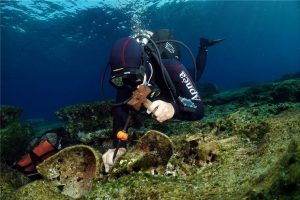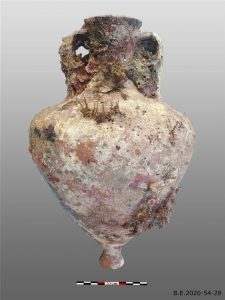Impressive archaeological finds, including amphorae and pottery of various styles and eras, were discovered in shipwrecks found in the sea area of Kassos, in the southernmost island in the Aegean Sea. One of them, which is considered the most significant, is placed in the Roman period and dates between the 2nd and 3rd century AD.

The trove of treasures was discovered during the second underwater research mission carried out in September and October by the Ephorate of Underwater Antiquities of the Ministry of Culture and Sports in collaboration with the Institute of Historical Research of the National Research Foundation, under the direction of George Koutsouflakis and Xanthi Argyri.

Twenty-three specialized scientists and technicians of various fields performed more than one hundred group dives, exploring the sea bed for more than 200 hours and inspecting most of the area which is part of the three-year research project (2019 – 2021) carried out for the first time in the sea area of Kasos. It an area of particular interest as it was a crossroads of cultures and an important navigation centre from antiquity to modern times.


In the cargo of the trove of the Roman era, artifacts found included oil amphorae dated from the 1st to the 3rd century AD made in workshops in Spain and more specifically in the region of Guadalquivir and are classified in the category “Dressel 20”. Among them, were also amphorae from shops of present-day Tunisia, dating between the 2nd and 3rd centuries AD and belonging to the broader category “Africana I”.

The recent underwater archaeological research brought to light three more shipwrecks whose cargo had a Greek identity. These are amphorae that were made in the North Aegean during the 1st century BC but some still come from the ancient Mendi of the 5th century BC. Among these three shipwrecks, there is one that dates to more modern times.
Ask me anything
Explore related questions





